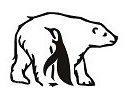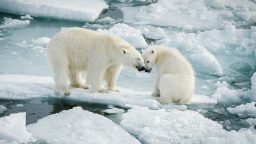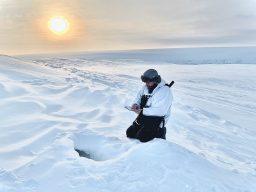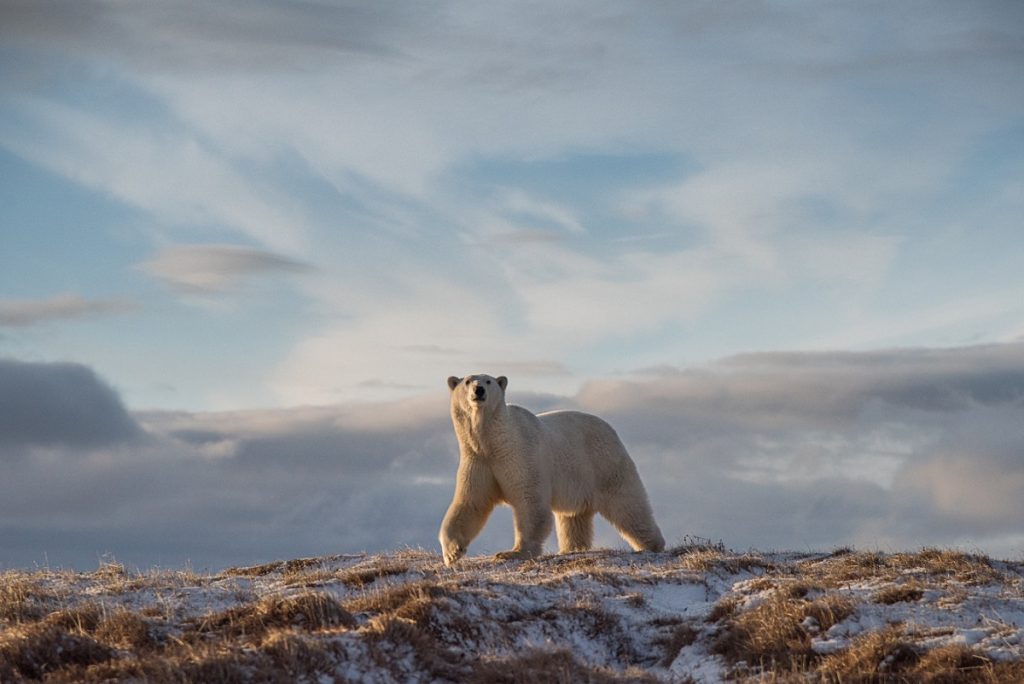
The polar bear is listed in the Red Book. Photo: Vitaly Dvoryachenko.
Four polar bear populations live in the Russian Arctic: the Barents Sea, the Kara, the Laptev, and the Chukchi-Alaskan. Their condition is of great interest to scientists — the red book view serves as an indicator of many natural processes. Ilya MORDVINTSEV, a leading researcher at the A. N. Severtsov Institute of Ecology and Evolution of the Russian Academy of Sciences, Deputy head of the polar bear research program in the Russian Arctic, Candidate of Biological Sciences, told about the research conducted by specialists and what conclusions can be drawn from them.
About delicious and healthy food
First of all, scientists are interested in the condition of animals in different seasons. And here the situation is very different for different populations. Those who live in the eastern sector of the Arctic, in the Chukchi Sea, live well — the biodiversity here allows animals to eat adequately. Therefore, the bears there are mostly large and well-fed. In the western sector of the Russian Arctic — in the regions of the Barents and Kara Seas — such “gifts” are extremely rare.
— They do not suffer even during the ice-free period, the most difficult for predators: many dead gray whales and walruses, whose rookeries abound in the vicinity, come ashore. In 2017, the staff of the reserve observed how over 200 predators fed on one whale discarded on Wrangel Island. And they ate up to quite decent shapes,” says Ilya Mordvintsev.

Photo: Maxim Deminov. If the bear does not go to the ice on time, it will be difficult for him to feed.
Climate change plays an important role. Due to global warming, the area of Arctic predators’ ice habitats is decreasing, and therefore their hunting grounds. Plus, the timing of melting and ice formation is changing, which is why bears have to stay on islands and on the coast in increasing numbers, where there is extremely little prey suitable for them. You can’t get fat on birds and seaweed, and sometimes exhausted individuals die without waiting for the ice to rise. Scientists are seriously concerned that the number of bears in critical condition during this period is increasing year by year.
— Alas, we cannot feed them, — Ilya Mordvintsev admits. — Creating some kind of feeding spots means subsequently condemning predators to meetings with humans, which can lead to tragedy. Most often, the beast, accustomed to human food, continues to search for it, it goes out to people at every opportunity. And it’s not far from conflicts that can lead to bear shooting.
Moreover, in some cases, it is the fact that the predator has access to human food that forces it to stay on shore when it is time to go on the ice. But if an animal finds itself in the neighborhood of a human settlement, where it smells a garbage dump, it is able to “get stuck” there and miss the moment when it is still possible to get to the ice. And the predator willy-nilly has to stay close to people in the hope of getting the same garbage.
Take your planet away
The fact that polar predators are not averse to “partake of the fruits of civilization” gives rise to another problem — diseases. Recently, researchers have begun to observe an increase in carnivorous plague in bears, which previously predators practically did not suffer from.
Scientists will learn exactly what diseases Red Book predators suffer from from biological samples. Some of the bears are immobilized, after which blood, fur, and excrement samples are taken from them, on the basis of which you can learn a lot of details about the animal’s condition.
— The bears caught during the ice period on Franz Josef Land have some diseases, and the predators that we immobilized on Novaya Zemlya (where they more often encounter humans and their waste products) have completely different ones, – explains Ilya Mordvintsev. — We also look at the amount of heavy metals and various persistent organic pollutants accumulated in animal tissues, such as polychlorinated biphenyl. A bear can only take these impurities from a human. And in this regard, the animal serves as a key indicator of the state of Arctic ecosystems, since it is the bear that is at the top of the food chain.
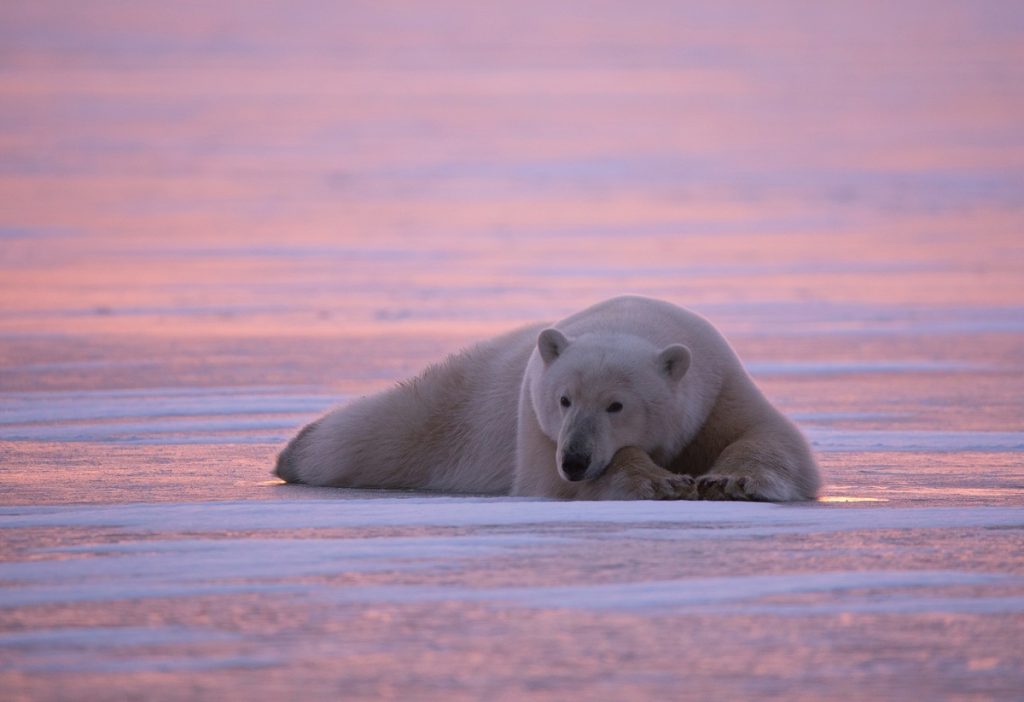
Photo: Vladimir Mats. The polar bear serves as an indicator of the ecological state of the environment.
The indicators of individuals from different regions differ slightly. For example, bears from the Kara Sea population have a higher mercury content in their bodies than their counterparts from the Barents Sea population. The fact is that the drains of large Siberian rivers, such as the Ob and Yenisei, mainly affect this region. Pesticides and herbicides from fields flow into the sea with them, heavy metals: mercury, copper, zinc, etc. — from industrial zones. Harmful substances from the sea enter the organisms of fish and zooplankton, from those into the tissues of seals and whales and eventually reach the bear. Therefore, studying the red book predator, you can clearly see the state of a particular ecosystem — marine, Arctic, regional. Fortunately, the researchers have not found any catastrophic indicators so far.
By examining the biomaterial, experts also do a genetic analysis — they determine which of the populations the animal belongs to. In recent years, microbiological studies have also been added, allowing us to judge the differences in the microbiome of bears from different regions of the Arctic
A separate area of work is the accounting of polar bears. This is a difficult, time-consuming and expensive event, because it is necessary to determine the number separately for four seas, for four different populations. But this is one of the most important tasks, the solution of which will allow us to judge the number of rare species as a whole. The Ministry of Natural Resources is waiting for the results, besides, its implementation is separately prescribed in the Strategy for the Conservation of the polar bear and included in the roadmap for the national project “Ecology”.
— A large team of scientists and specialists in Russia is currently working on this task, — explains Ilya Mordvintsev. — We must also take into account the fact that bears move from one region to another. After all, the division of populations along the borders of the seas is quite conditional. At the same time, observational data (both from our own and specialists from other countries — America, Canada, Norway) show that predators are tied to their region.
An animal can move, for example, from Franz Josef Land all the way to the Northern Land, from the Barents Sea to the Kara Sea. But at some point it will still return “to its native penates.” Most females go to the places where they were born and breed their offspring there, it is genetically inherent in them. Therefore, we keep records in territories limited by the limits of the population determined by the expert council.
The keyhole effect
Another area of research when working with animals is the peculiarities of their behavior, in particular how it is affected by climate change. Unfortunately, it is possible to observe bears directly, visually, only for a short time — expeditions in the Arctic are quite short-term. Satellite collars help to get a more detailed picture. Thanks to these devices, scientists receive data on where and along what routes bears move, how the behavior of females with small cubs differs from females with one-year-old cubs, etc.
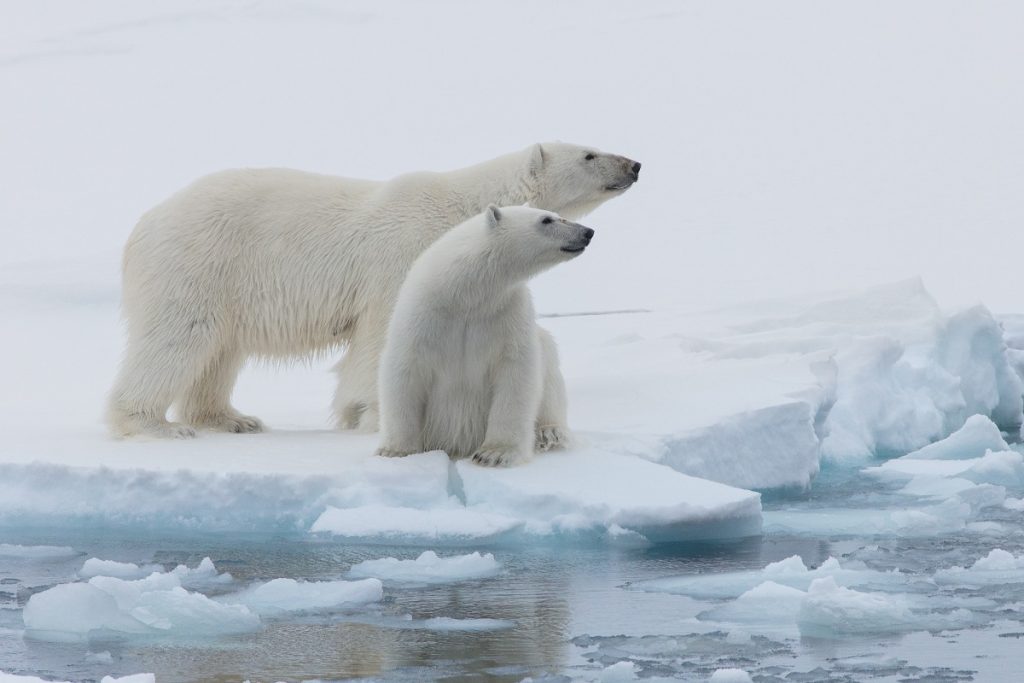
Photo: Nikolai Gernet. The cubs have to be constantly looked after to keep them out of trouble.
The work on the regions is gradually expanding. Researchers are supported by various organizations. Since 2010, for 13 years now, the polar bear research program has been receiving grants from the Russian Geographical Society. In recent years, companies operating in the Arctic, Rosneft and Norilsk Nickel, have also begun to allocate funds. Thanks to such assistance, scientists can conduct research in remote areas that were previously inaccessible.
Field observations have shown that on the Bear Islands, many females lie in dens. This is how another point became known, which can be called the polar bear maternity hospital. Previously, observations were conducted on Wrangel Island, where the largest number of dens was recorded, and on Franz Josef Land, which ranks second in this indicator. In other regions, such as Taimyr or Novaya Zemlya, biologists encountered only isolated dens.
— We have already calculated the number of females with cubs on the islands, — the scientist shares the results. — Now we have to find out why bears gather there in such numbers, which population they belong to, and much more.
Each “bearish” region has its own characteristics, which researchers gradually learn about by “spying” on the life of predators. So, in the Chukchi Sea, on the coast of Wrangel Island and near Chukchi settlements, females with three cubs are quite common. But in the western regions, bears rarely bring triplets, unlike their eastern “companions”. Only one such “mother of many children” was recorded on Franz Josef Land, and then no one saw her, the fact was established only on the basis of traces. Alas, not all babies live to adulthood: mortality among cubs in the first year of life in all populations is quite high. Sometimes they are even threatened by their own relatives.
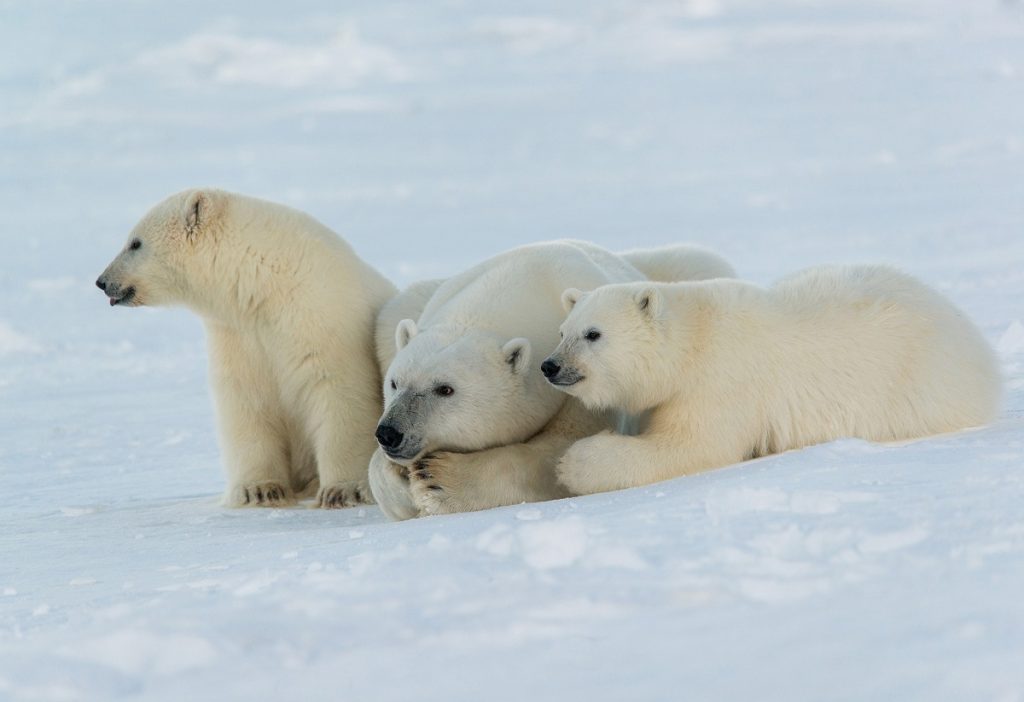
Photo: Maxim Deminov. The bears bring from one to three cubs.
The more information researchers collect, the more chances there are to save and restore the population of the Red Book species. Based on the data obtained, scientists are developing proposals for the conservation of the polar bear, and they are different for each region. Therefore, every year, as soon as the short Arctic summer comes, scientists go on another expedition to observe polar predators.
By Olga Ladygina
